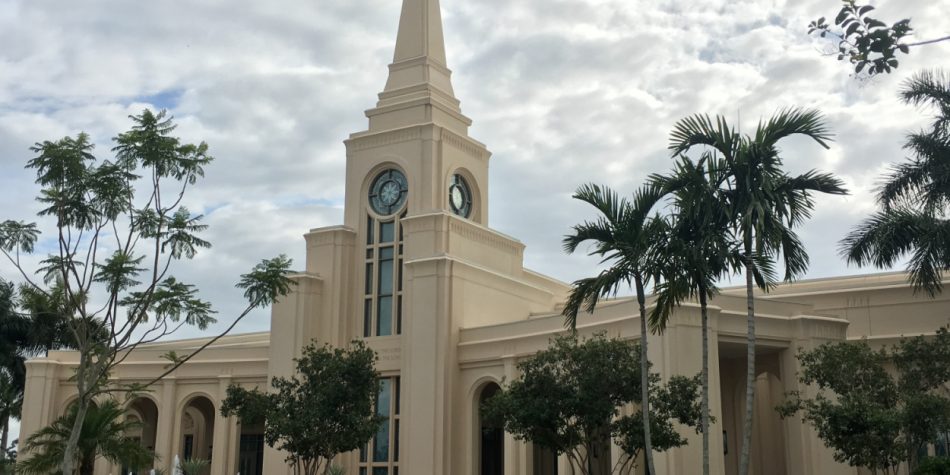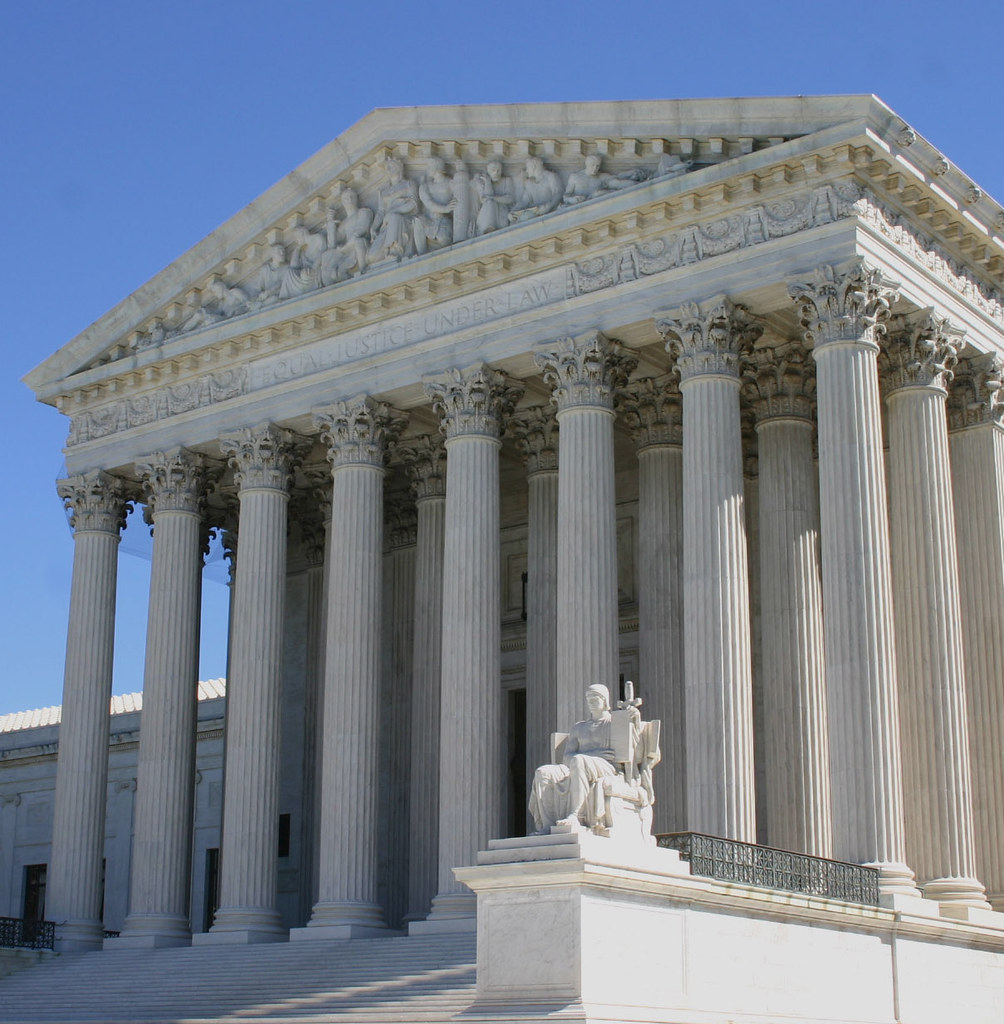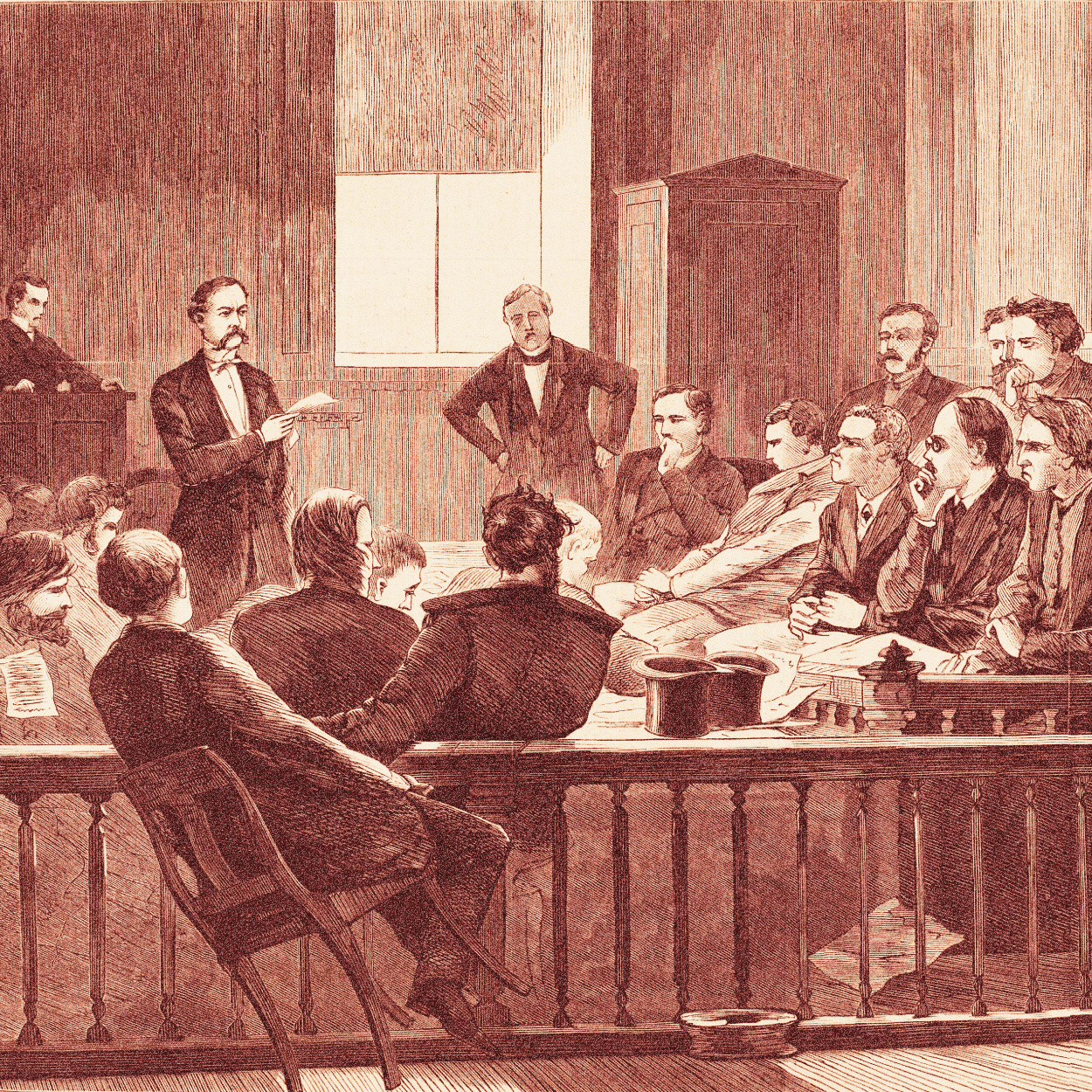As I look back, I see four texts that led me to cowrite the Latter-day Saint Radical Orthodoxy Manifesto with Jeff Thayne and J. Max Wilson. They are: Doctrine & Covenants 29:30 – 32, Zen core writings, Latter-day Saint General Conference over the years, and Hugh Nibley’s commentary on false polarity. These texts inspired me with visions of an unfinished restoration, a universal God, a true church, and a hidden struggle.
An Unfinished Restoration
Elder Holland visited Hungary while I was serving my mission there, and he gave a talk to the missionaries that I have never forgotten. In the talk he explained what the following few verses from D&C 29 meant:
But remember that all my judgments are not given unto men; and as the words have gone forth out of my mouth even so shall they be fulfilled, that the first shall be last, and that the last shall be first in all things whatsoever I have created by the word of my power, which is the power of my Spirit. For by the power of my Spirit created I them; yea, all things both spiritual and temporal—First spiritual, secondly temporal, which is the beginning of my work; and again, first temporal, and secondly spiritual, which is the last of my work.
Elder Holland taught that the last sentence was a specific reference to the Restoration. Specifically, Christ restored his Church temporally first. He further clarified that this meant the Church was first institutionally restored with offices, authority, keys, and so forth. However, the spiritual creation of the Church was not accomplished at that time. The spiritual creation of the Church was, instead, ongoing.
This had an immense impact on me then, and has never stopped being my guiding star in how I think about The Church of Jesus Christ of Latter-day Saints.
To be clear, conceptually this is not a new or unique teaching. It fits with the same messages we hear in General Conference about the ongoing Restoration. (For example, Elder Gong used the exact phrase “ongoing Restoration” in his talk for the most recent General Conference).
Ever since Elder Holland’s message 20 years ago, I have lived with a firm conviction that the best is yet to come. That the Church—especially the Church as a body of people—has much learning and growing to do. Although I treasure the sacrifices and accomplishments of the Restoration, I look forward to greater truths and understanding and spiritual maturity to come in the future. After all, the early Saints did not succeed in bringing about Zion. Sometime in the future—and only because we benefit from past efforts—the Saints will succeed.
A Universal God
For a time in college, I studied Zen judo from a sociology professor. His philosophical teachings have stayed with me much longer than the judo techniques. He considered Zen and Christianity mutually exclusive. In fact, Zen had been his escape from Christianity, a religion that he saw as mired in a dysfunctional emphasis on suffering now in exchange for rewards later. I shared his dim view of God as a cosmic vending machine. Because I viewed transactional Christianity as essentially bankrupt, I didn’t see any reason why his rejection of compatibility between Zen and Christianity should apply to my faith.
Because of this, I approached Zen with an open mind, and I was forever changed by what I learned. This isn’t the time for me to go into a full discussion regarding Zen’s role in my faith, but I’ll at least say that I have forever after been struck by the tension between acceptance (a good thing) and complacence (a bad thing).
This professor was not the only major influence on my faith from the “outside.” I had a friend in high school that shared his family’s eclectic interpretation of Buddhist self-denial, and I was persuaded that it was healthy to differentiate between the ego and the true self.
I have also benefited greatly from mindfulness techniques, although I didn’t even know the term until long after I had stumbled upon many of the principles and practices myself. I spent an awful lot of my teenager years with angst (who doesn’t?) that involved really vicious self-talk. Eventually I realized I would never treat my worst enemy with the spite I reserved for myself, and I resolved to treat myself as a friend from that point on: honest and encouraging.
It was completely natural for me to incorporate these (and many other) eclectic aspects into my faith because my parents raised me with a firm commitment to embrace all truth, no matter where it comes from. Quotes like this from Joseph Smith and Brigham Young were among my favorites as a younger man:
-
“We should gather all the good and true principles in the world and treasure them up, or we shall not come out true Mormons” (Joseph Smith).
-
“One of the grand fundamental principles of Mormonism is to receive truth. Let it come from where it may” (Joseph Smith).
-
“I want to say to my friends that we believe in all good. If you can find a truth in heaven, earth, or hell, it belongs to our doctrine. We believe it; it is ours; we claim it” (Brigham Young).
I found the same principles taught in our scriptures, for example in Doctrine & Covenants Section 90‘s injunction to “study and learn and become acquainted with all good books, and with languages, tongues, and people” and Moroni 7’s simple statement that “all things which are good cometh of God.”
God was not asleep during the Apostasy. He did not forget about His sons and daughters from all around the globe.
Joseph Smith and Brigham Young (and so many more since) would not have given us those injunctions to go out and find truth if there were not truth to find out there. But how many of us really have experienced that? How many Latter-day Saints have gone out and found beautiful and true concepts from other traditions, other civilizations, other periods of history, other scientific disciplines that can be synthesized with the Restored Gospel?
Many, yes. Obviously I’m far from the first. But still more could.
It takes a mature spirit and a firmly grounded testimony to appreciate and discern what is true and beautiful in other traditions without losing grip of one’s own, and that is exactly the kind of spiritual growth I believe and expect we will find commensurate with D&C 29 referenced earlier, and the ongoing spiritual creation of a Zion people.
God was not asleep during the Apostasy. He did not forget about His sons and daughters from all around the globe. He has been working with them, too. It’s our job to learn from the insights of our brothers and sisters, and unite all these truths into one eternal whole.
A True Church
Back in 2015 I had a rather obvious thought: if I really believed that the General Authorities of the Church of Jesus Christ of Latter-day Saints were prophets, seers, and revelators, how much attention would I be paying to what they had to say? If I had a chance to listen to a new sermon from Nephi, or Isaiah, or Enoch, or Joseph Smith, how would I feel?
What proportion of that excitement do I have for General Conference? Not much.
I’ve been an active member of the Church my whole life, but the only period of time where I was genuinely excited about General Conference was while I was on my mission. I devoured every word of those talks and felt the Spirit powerfully. Since then, not as much.
I decided it was time to change that, so I set a goal of reading every single General Conference talk going back to 1971 (the first year they’re easily accessible online). I got started in December 2015, projecting that at a rate of 1 session per week, it would take me about 14 years to complete the whole project. I missed out on most of the year 2019 (new baby), but other than that, I’ve been plodding steadily along, reading a session every week and writing a post with my thoughts. So have a few others, who signed up to join this General Conference Odyssey.
Of the four motivations for participation in Latter-day Saint Radical Orthodoxy, this has probably had the strongest impact. Reading the old talks has been revelatory in two ways. First, because I’ve learned how much more depth and variety and nuance and insight there is in our corpus of General Conference talks. I think I had pretty much the same stereotypes that many college-educated Latter-day Saints would have had about the Church from the 1970s and 1980s: harsh, blunt, and right-wing. The stereotype is wrong.
I’ve been stunned again and again at the gentleness of the council. At the lengths the General Authorities have always gone to in staking out exceptions and caveats to blanket injunctions. To stressing love.
I’ve also been humbled at how rich these talks can be, theologically. It’s true that there are some sessions where I just can’t find a talk that I’m really interested in, but there are also many sessions where I can’t pick just one. My theological understanding has broadened and deepened and sharpened through reading these talks.
The second revelation I’ve had is just how much more I get out of the General Conference talks when I come with the right spirit. The General Conference Odyssey is a long project, and I feel stressed about trying to stay caught up. (I’m behind again right now.) This leads me to sometimes read and write in a rush. Reading yet another talk is not always what I want to do with a precious spare hour of my time. In moods like this, the talks are dry, opaque, and lifeless. I have skimmed rather than read some of the talks.
But then a phrase will snag my attention. A concept will glitter among the black-and-white of text on screen. And I’ll stop, and approach with curiosity. And then I’ll be humbled by new ideas, new perspectives, and new testimonies. In times like that, I have devoured—rather than simply read—some of the talks, eyes moist.
This has also had a profound impact on how I approach the live General Conferences. In the past, it was a duty, and my decision making was generally: what’s the fewest sessions I can watch and still consider myself doing my job?
Those days are gone. Now I’m eager for General Conference weeks in advance, and I watch every single session.
Not every single talk—live or historic—is a revelation, but I have learned from this experience that while there is truth out there to go out and seek, there is also ample truth right here, in the conventional experiences of everyday Latter-day Saint life. You don’t have to pick one or the other, and I refuse to.
An Illusory Struggle
I’m not sure if I was supposed to or not, but while I was serving as mission secretary on my mission, I read every single article by Hugh Nibley that I could find. They’re not online anymore, which is tragic, but I recently managed to track down a copy of “The Prophetic Book of Mormon,” which includes Hugh Nibley’s discussion of false polarity.
This is the idea that the Nephites and the Lamanites at the time of Mormon seemed to be polar opposites but were in fact mirror images. In the past decade, I’ve seen a very similar dynamic unfold in American society, exacerbated but not caused by our social media ecosystem. In an ad–based market, the number one priority of all publishers is to attract attention, and outrage seems to be the most reliable way to sustain attention. This creates a paradoxical situation where political extremes need each other.
Whenever someone on the extreme left does something egregious (or that even just appears egregious), this is a gift to publications that cater to the extreme right, and vice versa.
And in many ways, the struggle between left and right is illusory. They are not fighting against each other; they are fighting with each other in a kind of grotesque dance of mutual rage. Every offense justifies a new offense in retaliation.
This incentive flattens political discourse onto one dimension. It’s true that, in real life, political viewpoints aren’t actually all-or-nothing. But the more drunk the two false poles become on their codependent dysfunction, the more they draw people into ever tighter alignment with their viewpoints. As compromise and discourse are derided as weakness, it’s less and less possible to dissent from the warring tribes.
Politics certainly doesn’t have to be reduced to a one-axis, right-vs-left, but the more intense the outrage becomes, the more all other axes wane and fade from relevance.
I think this is fairly well-understood, even if understanding doesn’t make resolution any easier. And it is also fully compatible with counsel from the Church. Earlier this month Elder Kearon urged students at Ensign College to “avoid the poles”:
If we think of the poles on the North Pole and the South Pole, we think of them as freezing and largely desolate places,” Elder Kearon said. The climate there is freezing and inhospitable to the vast majority. The same can be said for the poles of social and political opinion. … Let’s move away from our poles, and come together and make peace.
Note that, just as with Nibley’s “false polarity,” the North and South poles aren’t actually that different. The frozen wastelands are quite similar.
Latter-day Saint Radical Orthodoxy has been described as a “third way” and I don’t mind that description. If you’ve only got a few words to convey the gist of it, you could do worse. But it’s not entirely accurate. Because a third way would be an attempt to find some kind of balance between two extremes, and that’s not the intention of Latter-day Saint Radical Orthodoxy. We’re not interested in avoiding the false polarity by finding a midpoint between the two. We intend to reject the premise (just as Dan Ellsworth said in his guest post for By Common Consent.)
The reason for this is not neutrality. It’s to ensure that we’re enlisted in the right conflict. I ran a cursory search and found “contention” mentioned in four different talks from the most recent General Conference, including talks from all three of the First Presidency:
Their concerns echo our scriptures. King Benjamin warned his people, “Beware lest there shall arise contentions among you, and ye list to obey the evil spirit” (Mosiah 2:32). Jesus Christ taught that, “he that hath the spirit of contention is not of me, but is of the devil, who is the father of contention, and he stirreth up the hearts of men to contend with anger, one with another” (3 Ne 11:29).
To fight contention you must eschew aversion and embrace attraction.
If we are to follow Paul in a “wrestle not against flesh and blood, but against principalities, against powers, against the rulers of the darkness of this world, against spiritual wickedness in high places,” then we have to stand against contention itself.
This is a difficult goal, almost as oxymoronic as the term “radical orthodoxy” itself. How do you contend against contention? The answer, I believe, lies in the insight that most actions of all creatures have, at root, one of two fundamental motivations: attraction or aversion. Attraction is movement towards what you seek to love and understand. Aversion is movement away from what you fear or hate.
To fight contention you must eschew aversion and embrace attraction. You must seek love and understanding. You must define yourself not by what you are against, but by what you are for.
Latter-day Saint Radical Orthodoxy
Putting these four concepts together is what led me to radical orthodoxy. I believe we as Latter-day Saints have much learning and growing and maturing to do. I believe that much of that can and will come through divine eclecticism: combining all truth and beauty we can find outside of our tradition with the beautiful truths taught by the Restored Church of Jesus Christ.
Practically speaking, Jonathan Green explained what this looks like in his post at Times & Seasons:
We do need creative thinking about what it means to be a member of the Church of Jesus Christ today, but without reflexive, self-centered complaining about the apostles. We do need creative thinking about doctrine that isn’t based on agonistic rejection of basic principles.
Latter-day Saint Radical Orthodoxy is certainly not inventing that kind of thinking and claims no monopoly on doing all of it, or doing it best, or anything like that. Our goal is simply to inspire more people to try it (and share more of what they’re learning!)
That addresses the first three of my four inspirations: an unfinished Restoration, a universal God, and a true Church.
It also addresses the fourth—the invisible struggle—because this pursuit of what we love is the only escape from the relentless riptides of tribalism. One cannot simply opt out of the false polarity. The only escape is through total dedication to an ideal that rejects both poles. Nature abhors a vacuum. To protect your heart from the cancer of contention, you must fill it with charity instead.
And so ultimately, for me, radical orthodoxy is about love. Love of truth and beauty. Love of our brothers and sisters from all backgrounds, religions, races, perspectives, and identities. Love of God.
I don’t pretend to have all the answers to the difficult, complex, and wrenching controversies of our day. But that can be good news. If I had all the answers, what would be left to strive for? And it is the striving, especially communal striving—to the extent that it helps us keep and honor our covenantal relationship with God through Christ—that we need now, perhaps even more than we need answers.

















